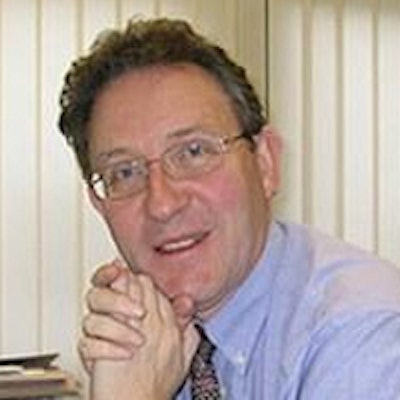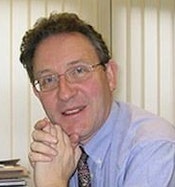
Teaching radiology can be a challenging task for young and old radiologists (if you take it seriously and have high aims), so it is always great to get advice! Especially if it's the result of decades of experience from the still very active Oxford professor Dr. Stephen Golding. Please read on below to find out how to keep your students awake in the dark and where to get new ESR publications. You'll also learn about the irreplaceable value of human interaction and how we, as radiologists, are constantly ambassadors for our specialty; how very true!
ECR Today: It is sometimes a challenge to keep people awake in a dark, warm lecture room after lunch. Do you have any top tips?
Stephen Golding: Quite simply, this should not occur! Ensure that your room is well-ventilated, or make yourself a nuisance to the person who's responsible for that, or make your teaching so interesting that no one can sleep! Interactive teaching works well in these circumstances, because no one sleeps if they are likely to have to speak, so ask lots of questions, allocate brief presentations, get discussion groups going; that sort of thing. And involving your audience in the problem also works well, so make a joke about the heat and the ventilation. Above all, don't try to ignore it and carry on as if nothing is wrong. If all else fails, serve coffee; this can be very popular (especially with medical students).
 Dr. Stephen Golding was previously chairman of radiology at Oxford University Hospitals. He retired from clinical practice in 2012 but remains active in education, being a fellow of University College in the University of Oxford. He is currently chair of the ESR Undergraduate Education Subcommittee.
Dr. Stephen Golding was previously chairman of radiology at Oxford University Hospitals. He retired from clinical practice in 2012 but remains active in education, being a fellow of University College in the University of Oxford. He is currently chair of the ESR Undergraduate Education Subcommittee.How do you avoid "death by PowerPoint"? Which teaching methods do you find work best to engage students?
The great advantage of radiology for teachers is that every image has a human story attached to it. A good teaching session can be made up of individual quiz cases with a little history. You can either present these yourself and ask the audience questions, or label the images with history and questions and leave the students to study them alone for a while before you come back to go through their responses. This is particularly valuable if you are busy and need the time to do something else! A brief formal presentation to sum up at the end of the session then works well.
Do you send information out to participants before teaching sessions and, if so, would you expect them to do some preparation work beforehand? Do you give out take-home sheets or similar after a teaching session? What are your experiences?
I find it rather depressing that these days most audiences, medical students in particular, seem to feel that if they haven't been given anything physical to take away, they haven't learned. There are two reasons for distributing lecture notes: either to prepare the audience for the presentation so that they get more out of it, or afterward as a reminder of what happened. The learning is something that occurs between the teacher and the audience, and ideally also before and afterward, of course.
Which online educational materials (case collections, tutorials, focused topic information) could you personally recommend and why? Have you used them in teaching sessions or as part of further reading?
Well, I'm going to show my age, I suspect! I have always worked on the basis that I collect my own teaching material and therefore know the case histories in detail. In my view, this familiarity with the material communicates itself to the student. However, I accept that it takes time to develop a good personal archive and these days people are busy, so I can see how an online facility could be very useful. I just can't speak with experience of it myself: It's a generation thing, perhaps.
Is there any printed educational material you could personally recommend for undergraduate students or doctors in medical or surgical specialties who want to know a little more about radiology?
The ESR has just published "Becoming a radiologist" on its website, which is designed specifically for this purpose. This is in the process of being circulated to medical schools as an advertisement for our subject. Thinking more medically than professionally, there are many good "basics" books on the applications of radiology for medical students, and I usually recommend that an interested student take a look at one of these to get an idea of the medical aspects of the speciality.
And while it's not the precise remit of this question, I would remind readers that every time we as radiologists interact with a student, we are ambassadors for our speciality. I say this because we know that some doctors turn to radiology because of the impression a particular radiologist made on them in their work.
Classroom sessions with a consultant radiologist are limited due to time/cost restrictions. Which other options are there to engage with students or junior doctors and get them interested in radiology?
Let's first bear in mind that human interaction with the teacher, and I do mean interaction, is a powerful tool and nothing really replaces it! That said, there are several supplements that can be introduced very easily, such as having a radiology quiz case of the week with a brief open session and a radiologist at the end of the week to go through the answer. We should always remember that our junior staff are a valuable and often very enthusiastic resource. They are also younger and likely to be more in touch with the students than many of us! They can help with getting students into the department to watch and discuss some work. Our emphasis should always be on radiology as a living, active subject.
Any other top tips for teachers?
Yes. Always put yourself in the place of the student. Try to understand what they need, which is not always the same thing as what they ask for, or what interests them most. And try to see yourself as they would see you when teaching. Above all, never succumb to the temptation to impress them with how clever you or your subject can be!
Dr. Christiane Nyhsen is a consultant radiologist at Sunderland Royal Hospital in the U.K., former chairperson of the ESR Radiology Trainees Forum, and a member of the AuntMinnieEurope.com Editorial Advisory Board.
Originally published in ECR Today on 4 March 2015.
Copyright © 2015 European Society of Radiology



















